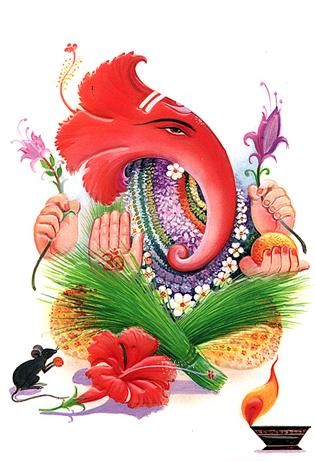In the Gurukula style
- GUDIPOODI SRIHARI
| Nathaki Nataraj displayed her skills in the Tanjore style of Bharatanatyam. |
 TANJORE STYLE Narthaki Nataraj presents the `nayaki roopa'
TANJORE STYLE Narthaki Nataraj presents the `nayaki roopa'Chaitanya Art theatres and Natyasthal together introduced, for the first time, a Bharatnatyam artiste of rare talent. Narthaki Nataraj belonging to the original Tanjore style. Her programme was staged at Ravindra Bharati recently.The nattuvanar Dinesh Mahadevan in his introduction introduced the artiste as person who had studied under the tutelage of Natyakalanidhi K.P.Kittappa Pillai, a scholar and direct descendent of Tanjore quartet, to learn Bharatnatyam in gurukula style. This style of dance was set by the 17th century's Ponnaiah Pillai and his three brothers known as `Tanjore Quartet', who are said to be the fathers of Bharatanatyam. Narthaki grew up in age and art in that school, specialising in presenting the Nayaki Roopa that presentsthe roles of heroines of themes mostly revolving around Lord Krishna. Most of the compositions in those days were of Telugu origin that travelled from Andhra to the deep south along with the artistes, during the rule of Nayaka kings of Tanjore. The వర్ణం (varnam), of the repertoire Narthaki presented was in Telugu, in which she revealed her talent both in లాస్య (lasya) and శుద్ధ ళయ (Suddha Laya) (doing abhinaya in sitting posture). The varnam that was the highlight was originally presented by Balasaraswati.
Narthaki has given many shows in India and abroad and has also earned the prestigious fellowship of Sangeetha Nataka Academy of Government of India for 2003 - 2005. She is also a top grade artiste and all this goes to say, what the will of a person can achieve. Narthaki's performance revealed her great artistic talent, that stamp her one of the great dancers of Bharatanatyam, known for శృంగార నాయకి (Sringara Nayaki) and as true representative of the Tanjore style, known for perfect grammar. Most of the numbers she had in her repertoire belonged to this quartet. However the repertoire presented here had been limited to a mere four numbers that included the long varnam. The presence of a concert standard vocalist, Roshini Ramanathan, and young Nattuvanar Dinesh Mahadevan, Viswanathan on mridangam and Devaraj on flute added to the beauty of her performance. It proved to be good teamwork too. The tradition is also known for setting pace of a rendition in vilambit, so that the audience can understand lyrical beauty of the composition and its interpretation in abhinaya by the dancer.
Before the dancer came on stage, the invocation to Vinayaka was chosen from one of Thyagaraja's operas. The performance of the artiste was opened with Sollukattu (verbal expression of Jatis) in Khandajati Triputa, in raga Hamsanadam. This gave a kind of warming up exercise to the dancer like in a nritta part, striking different postures a she went out with foot work matching every syllable of Sollukattu. Then there was a ragamalika slokam in ragamalika, in praise of Goddess Lakshmi. Every word of sloka found apt mudras and movements, literally translating them into a dance format of vivid expressions. The main and the most attractive piece of her show was a Kalyani Pada Varnam in Telugu - Sarsijakhsi written by Ponnaiah Pillai of the quartet. The dancer (heroine) is the devotee of Soundararaja Gopala swamy and the thematic content reveals how the dancer craves to meet her Lord. Her eagerness to join him and the way her friends pacify her, even applying Gandham were reflected in her vivid abhinaya expressions, as part of her dance. Every charanam was rendered like a nereval giving opportunity for the dancer to come out with different thematic expressions, enabling the audience to enjoy every bit of it. Roshini spelled every Telugu word with perfection and clarity. Each of these charanas was interspersed with Jaties of different choreographic format in pure dance patterns, ending in perfect Teeramanams, matching the mridangam beat. The came Chinnam Chirukeliye a ragamalika kirtana of Subramanyam Bharati, a kind of lullaby, that presents how Yasoda cajoles her child Krishna to sleep. She plays with him, feeds him with butter and finally puts him to sleep. Krishna's childhood activity and Yasoda's interaction with him, sometimes carrying him on back and in arms was well presented by her in detail. Then there was a Tillana in Nalinakanthi set in Sankeerna Jati Chapu talam. The jatis matched with dancer's posturing and delicate movements. Devaraj on flute gave apt tunes to every scene.
Artiste Narthaki Nataraj was felicitated after the conclusion of her dance.
Courtesy: The Hindu


0 Comments:
Post a Comment
<< Home